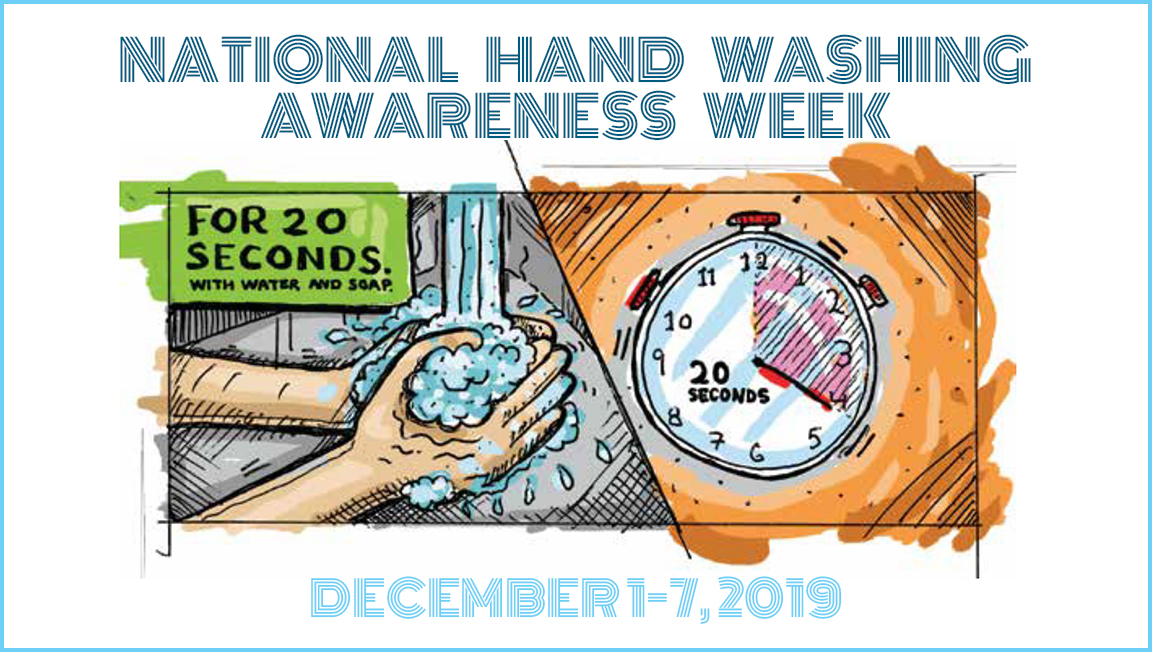
Winter Is Coming: Wash Your Hands
December 04th, 2019
It’s National Handwashing Awareness Week, so we thought it’d be a good time to share some food safety tips with you. Although most people attribute food-borne illness to eating out at restaurants, a large portion of cases occur within people’s own homes. What’s worse, a 2018 USDA study showed that only about 3% of people wash their hands correctly. Even though most of us learned this basic skill when we were young, the data shows that it’s time for a refresher.
Handwashing, along with a few simple practices, are proven ways to prevent bacteria from spreading and causing illnesses in your home. The holidays mean lots of home cooked meals and many opportunities to spread germs. Follow these four important ways in order to keep your food safe:
CLEAN: Wash Hands and Surfaces Often
- Wash your hands with warm water and soap for at least 20 seconds — about the time it takes to sing the “Happy Birthday” song twice. Wash them before and after handling food, after using the bathroom, and after doing anything that could dirty them like touching pets, changing diapers, and blowing your nose.
- Wash cutting boards, dishes, utensils and countertops with hot soapy water before and after use. Make sure to wash these items after prepping items like raw meat and eggs before moving on to prep the next ingredient.
- Rinse fresh fruits and vegetables under running tap water, including those with skins and rinds that are not eaten.
- Keep things like backpacks and books off surfaces that you use to cook.
SEPARATE: Don’t Cross Contaminate
- Separate raw meat, poultry, seafood, and eggs from other foods in your grocery shopping cart, grocery bags, and in your refrigerator. Make sure these foods are placed on the bottom shelf of your fridge so they don’t drip juices onto other foods.
- Use one cutting board for fresh fruits and vegetables and a separate one for raw meat, poultry, and seafood.
- Never place cooked food on a plate that previously held raw meat, poultry, seafood, or eggs unless you have washed that plate with hot soapy water.
COOK: Cook to Proper Temperatures
- Use a food thermometer, which measures the internal temperature of cooked meat, poultry, and egg dishes, to make sure that the food is cooked to a safe internal temperature. They are relatively cheap and can be bought to handle the temperature of your fridge and your oven.
| SAFE MINIMUM INTERNAL TEMPERATURES
as measured with a food thermometer |
|
| Beef, pork, veal and lamb
(roast, steaks and chops) |
145˚F with a three-minute “rest time” after removal from the heat source |
| Ground Meats | 160˚F |
| Poultry (whole, parts or ground) | 165˚F |
| Eggs and egg dishes | 160˚F, but cook eggs until both the yolk and the white are firm; scrambled eggs should not be runny |
| Leftovers | 165˚F |
| Finfish | 145˚F |
| GUIDELINES FOR SEAFOOD | |
| Shrimp, lobster, crabs | Flesh pearly and opaque |
| Clams, oysters and mussels | Shells open during cooking |
| Scallops | Milky white, opaque and firm |
- Bring sauces, soups and gravy to a boil when reheating.
- Use microwave-safe cookware and plastic wrap when cooking or reheating food in a microwave oven.
CHILL: Refrigerate Promptly
- Use an appliance thermometer to make sure the refrigerator temperature is consistently 40°F or below. The freezer temperature should be 0°F or below.
- Refrigerate or freeze meat, poultry, eggs, and other perishables as soon as you get them home from the store. You should never leave these items on the counter for more than two hours before putting them in the fridge (one hour when the temperature is +90˚F)
- Do not defrost food at room temperature. There are three safe ways to defrost food: in the refrigerator, in cold water, and in the microwave using the defrost setting.
- Use refrigerated food and go through your fridge on a regular basis to discard old items.
Additional Resources:
https://www.choosemyplate.gov/resources/food-safety
https://www.fsis.usda.gov/wps/portal/fsis/home
